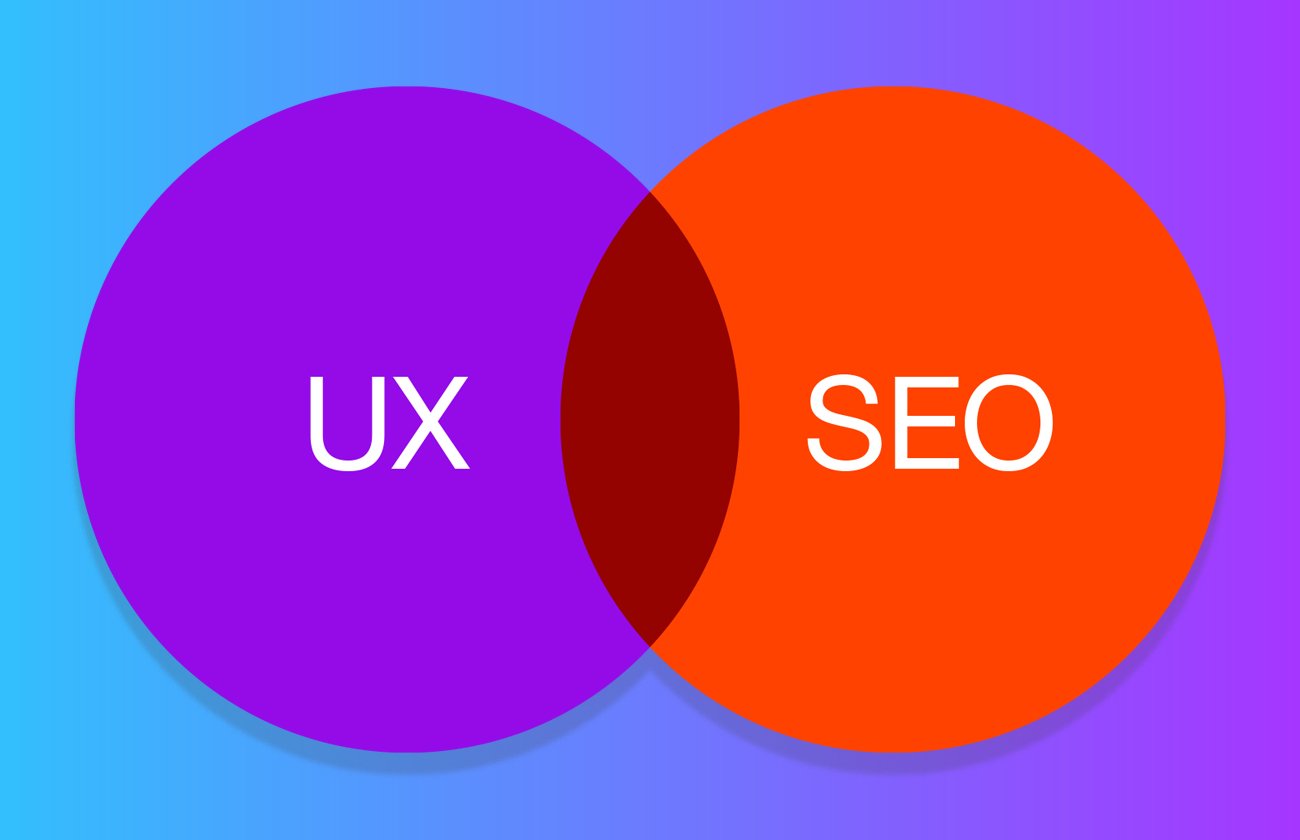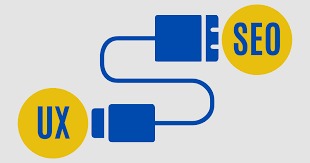
You put in a lot of work to make sure that people like your website and material. You're in charge of marketing, design, content, SEO, and other parts of the website so that people have the best experience possible. You know that SEO and UX are linked and that improving one usually makes the other better as well.
People don't care about how you do SEO or marketing; what matters to them is how clear, helpful, and easy to use your content is. It's a short form of what you call user experience. One of the most essential parts of businessand customer service is a good user experience (UX).
Many studies have already shown that it leads to more brand loyalty, but web design is still one area where it's not being used enough. In this article, we will discuss how to combine SEO and UX to improve your website.
What Is SEO?
Search engine optimization, or SEO, is a type of digital marketingthat includes making your website better for search engines in a number of ways. Search engines like Google and Bing use an algorithm to figure out which website is the best match for a particular term by looking at a number of factors about your site and other sites as well.
The search engine algorithms figure out which website is best for each person when they use a search engine to find something of interest. The search engine results pages (SERPs) show these sites at the top. That person is more likely to end up on your website if it ranks higher on related SERPs.
What Is UX Design?
UX, which stands for "user experience," is a design process that looks at how a website looks and works, as well as how the user interacts with it. A lot of people think this only refers to what a web design service or company does, but UX is more than that. It also talks about the layout, web creation, the organization of the information, and what a person sees and does when they browse a website.
A website's design might look good, but it might not work well for users because of how it's set up. Also, you could have a website with excellent material and valuable details. Still, the way the website is set up makes it hard for people to trust it or even find the page they need.
In another situation, you might have a website that looks great and is easy to use. Still, many users click away because it takes too long to start. This is because people are getting impatient as internet access gets more straightforward to get.
UX Strategies To Improve SEO Ranking
High-Quality And Relevant Content
"High-quality and relevant content" on a website means that the materials and information there are practical, helpful, and in line with what people want and need. To give you more information, here are some of the traits of high-quality and valuable content:
- Valuable and useful - Content should give people deep insights, answer their questions, and give them valuable data. It should show that you know a lot about the subject and go beyond basic information.
- Well-written and exciting- The content should be well-organized, simple to read, and free of spelling and grammar mistakes. There should be a lot of interest in the writing, and people should want to stay on the page longer.
- Original and unique- The content you write should be your own and not taken from other sources. To stand out from others in the same field, it should offer a new point of view and unique ideas.
- Diverse formats - There are many types of high-quality material, like blog posts, movies, slideshows, podcasts, and stories. Using a variety of forms helps meet the needs of different users and improves the experience for everyone.
- Keyword optimization- Keywords that people often look for should be used to improve content. But it's essential to keep the flow fluid and use only a few keywords, as this can hurt both SEO and user experience.
- Up-to-date and relevant- Content should be changed often to make sure it is correct and up to date. It should fit with current events, news in the industry, and the hobbies of the people you want to reach.
- Adequately sourced and attributed- If data or information from outside sources is used, it needs to be correctly attributed and cited to keep the integrity and trustworthiness of the work.
- Multimedia integration - Adding related movies, pictures, or interactive features can make the material more interesting and improve the user experience.
Easy Site Navigation
Focusing only on SEO and results means that most websites have good site layouts and advanced navigation. A site that is simple to navigate is valuable and straightforward to use. It lets the person finish their task faster and with less stress.
Only sometimes, having a lot of web pages is the best thing to do. For SEO, one web page with good information and an easy-to-use style is usually enough. Also, sites with many pages and lots of information are still good for SEO as long as they're simple to use.
User-Friendly Layouts
The style, order, and size of text on a website can all affect its SEO. UX design may include both SEO and looks to make the site easier to use and bring more people to it. There must be calls to action, pictures, and films all over the page.
You can also make the content easy to read by using clear titles, organizing and structuring it, or adding links to other relevant content. A content or picture change script can also be used to make your website's content different every time someone visits.
Mobile Experience
These days, it's essential to have a great mobile experience. The good news is that the rules that govern your website also govern its mobile form. It should load quickly, look good, and be simple to navigate. You do want people and search engines to find what they're looking for, after all quickly.
So, give your site a lot of thought for mobile users! Does it cover your website's main parts? Would it also make people want to look around the rest of your website (and any search engine)? The size of a button could even change how a person feels. You can always use Google's mobile-friendliness test to find out what they think of your mobile site, or you can read our post on how to make your mobile site better.
Website Architecture
The design and style of your website are essential to the user experience. Visitors will get annoyed and leave your website quickly if you need to make it easier for them to find the information they need. Take these things into account to stop this from happening:
From all of your web pages, it should be straightforward how to get to your home page.
Labels for categories should be clear, and labels for subcategories should be the same. All of these should be able to be reached from the main menu. Users might need to learn which area a particular product, service, or piece of information falls under, so a search box needs to be easy to find.
Website Speed And Performance
How fast your website runs and works for people is called its speed and performance. Users expect websites to load quickly these days; if they take less time, they may get annoyed and leave. Websites that take a long time to load can make the user experience terrible, which can cause more people to leave the site quickly and fewer people to convert.
Getting a website's speed and performance just right means cutting down on the time it takes for pages to load, servers to respond, and code and pictures to work best for users. By making website speed a priority, you can make users happier and improve your site's general performance in search engine results.
Benefits Of Websites That Give Good UX
Every UX design company makes sure that business websites have user experience aspects. However, not every site creator can use these styles and methods. For example, firms that do user experience design pay more attention to customers than site designers do. Still, one thing that a UX design consulting company does is do a lot of UX research.
Reduced Costs
UX design helps keep a website running for longer, which saves money. Think about the many business websites that need a flexible web design. Their pages don't work right on mobile devices, so they lose a lot of possible users. They have to pay more money to remake their web pages because of this.
It does cost more upfront to hire user experience design services. However, the UX design method includes a lot of testing, study, and analysis. As a result, the end product is more likely to make people happier and boost sales.
When a site has a good UX design, it doesn't need many or any significant changes to its web design. In the long run, it is cheaper to fix problems or make more progress because of this. Some figures say that fixing mistakes after the fact can cost up to 100 times more than fixing them before the fact.
Increased Leads And Conversions
As was already said, bad UX makes many people give up on a site or job. On the other hand, sites with good UX can keep more users, which can lead to more leads. Good UX design also helps boost the number of people who buy something.
As an example, think about an online store. Conversions can go up by up to 35%if the checkout process and appearance are better. However, 27% of buyers would give up on their shopping cart if the checkout process took too long or needed to be easier to understand.
An essential part of user experience is making it simple for people to buy things. A good UX experience should also include accurate information that is easy to find and understand. This is because many people study brands before they buy something.
Better SEO Performance
One thing that all search engines do is give users a "good experience." So, they use complicated formulas to give users results that match what they were looking for. That's the only way they can be sure that people will keep using their services.
Pages that need flexible web design look broken or too small to read on phones. The reason search engines rank them low in search results is that they make the user experience terrible.
The 63 percent of organic search traffic comes from mobile devices. Because of this, businesses need to spend money on flexible web design to make sure that pages load appropriately on all screen sizes.
Pay-per-click (PPC) marketing is another area where good UX design can be helpful. Google, for example, checks how people feel about landing pages. With this measure, they can offer ways to make user experiences better and more efficient. In fact, landing pages with good UX make the ad campaign work better and boost the number of people who buy something.
Stronger Brand Loyalty And More Referrals
Customer experience, or CX, is how a customer feels about interacting with a brand. It includes the whole buying journey, which includes the website for the business. The UX design process helps with good CX in more than one way.
You can never say enough about how important CX is to company loyalty. For example, a study found that 73 percent of millennials are more likely to keep buying from brands that offer a steady customer experience. Also, 88 percent become loyal to a brand after buying it three times or more.
A good UX web design not only brings in more leads and boosts conversions but also helps build better relationships with customers. Because of this, customers become more loyal to the brand and start telling others about their positive experiences.
People who have loyal and happy customers might post about it on their social media pages. They might also tell their family, friends, and coworkers about it. In addition, they can write good reviews that help the brand's image.
User Experience Design Services Provide Great Rois
Business owners can reach their goals with the help of design data from user experience design companies. For example, studies have shown that businesses that use UX design make 32% more money. Besides that, they also got a faster total return to shareholders (TRS) by56%.
Key Performance Indicators (KPIs) For SEO And UX
Key Performance Indicators (KPIs) serve as the compass for assessing the success of both SEO and UX strategies, offering valuable insights into the performance metrics that drive digital excellence.
Organic Search Traffic
Organic search traffic stands as a cornerstone KPI for SEO, measuring the influx of visitors arriving at a website through search engine results. A surge in organic search traffic signifies effective optimization for relevant keywords, enhancing the site's discoverability. Monitoring keyword rankings and search engine visibility changes are additional KPIs pivotal for gauging SEO success.
Bounce Rate
The bounce rate, a crucial KPI for both SEO and UX, reveals the percentage of visitors departing the site swiftly without meaningful interaction. High bounce rates often point to issues such as unmet user expectations, sluggish loading times, or unattractive design. Analyzing this metric unveils areas for improvement, prompting refinements in technical aspects and content relevance.
Conversion Rates
Conversion rates stand as paramount KPIs for both SEO and UX, showcasing the effectiveness of turning visitors into customers or subscribers. While SEO attracts users, a seamless user experience is pivotal for achieving conversions. Tracking rates for specific goals, such as form submissions or product purchases, provides insight into the real-world impact of digital strategies on business outcomes.
Page Load Speed
Page load speed, a quintessential UX-related KPI, directly influences SEO performance. Slow-loading pages contribute to higher bounce rates and diminished search engine rankings. Continuous monitoring of page load times, coupled with addressing issues like large images or inefficient code, ensures a positive user experience and maintains SEO competitiveness.
Frequently Asked Questions
How Does High-Quality Content Impact Both SEO And UX?
High-quality content enhances user engagement (UX) and attracts search engine attention (SEO), improving overall website performance.
Why Is Easy Site Navigation Crucial For Both SEO And UX?
Simple navigation accelerates task completion for users (UX) and assists search engines in indexing content effectively (SEO).
How Does Mobile Experience Contribute To SEO And UX Improvements?
A great mobile experience ensures faster loading, user satisfaction (UX), and aligns with search engine preferences, positively impacting SEO.
What Role Does Website Architecture Play In SEO And UX Integration?
Clear architecture aids user understanding (UX) and facilitates search engine crawling, improving overall website visibility (SEO).
Why Is Website Speed Crucial For Both SEO And UX?
Fast-loading pages enhance user experience (UX) and contribute to higher search engine rankings (SEO).
Final Thoughts
For a digital marketer, it is important to understand How to combine SEO and UX to improve your website. The synergy between SEO and UX is a powerful catalyst for enhancing your website's performance and user satisfaction. Recognizing that people prioritize clarity, usefulness, and ease of use over the intricacies of SEO and marketing, a focus on high-quality, relevant content becomes paramount.
By integrating diverse content formats, optimizing keywords judiciously, and ensuring content freshness, your website becomes a valuable resource for users and search engines alike. The marriage of SEO and UX extends beyond content to encompass user-friendly navigation, intuitive layouts, mobile optimization, and swift website performance.
Embracing these principles not only reduces costs by eliminating the need for frequent redesigns but also leads to increased leads, conversions, and brand loyalty.




